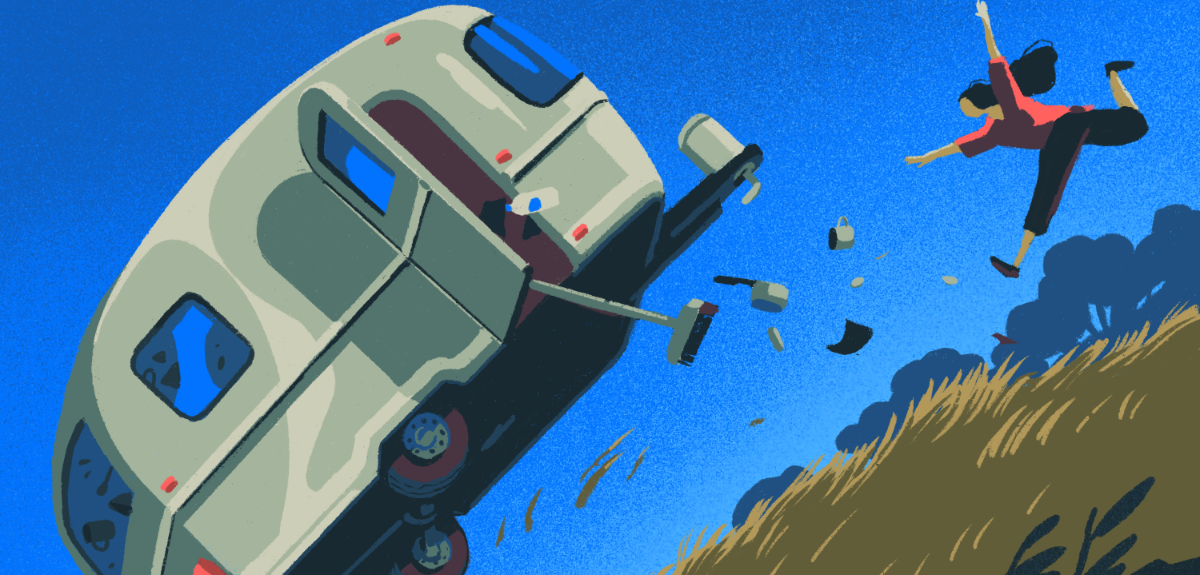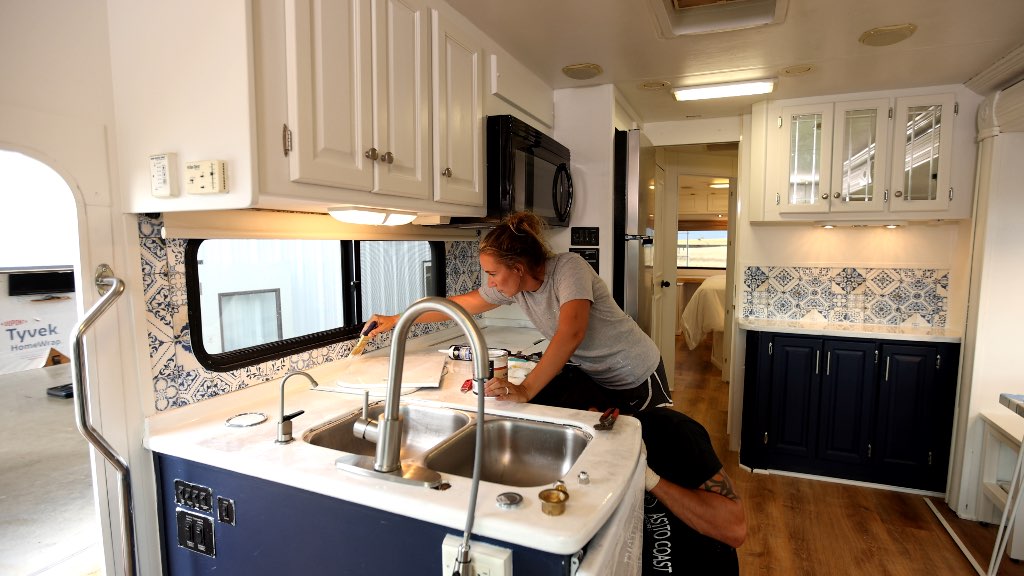Rigs + Gear: Rock Solid Stabilization
How to Maximize Your Trailer's Stability in Camp Once the Jacks are Set and the Steps are Deployed
Image Caption: Photo Credit: Bruce W. Smith
A common complaint among RVers camping in fifth-wheels and travel trailers is the feeling of instability when the occupants move about on the inside or even when the wind blows. A stable RV is a comfortable RV, and the least bit of shaking or movement in one can be a subliminally unsettling event for some. That’s why the RV aftermarket is rich with camper-stabilizing products.
But before you race to the nearest dealership or Camping World or spend time scouring the internet in search of the perfect stabilizers for your trailer, it’s good to step back for a moment to zone in on what causes a trailer to move once the jacks are dropped and the steps deployed.
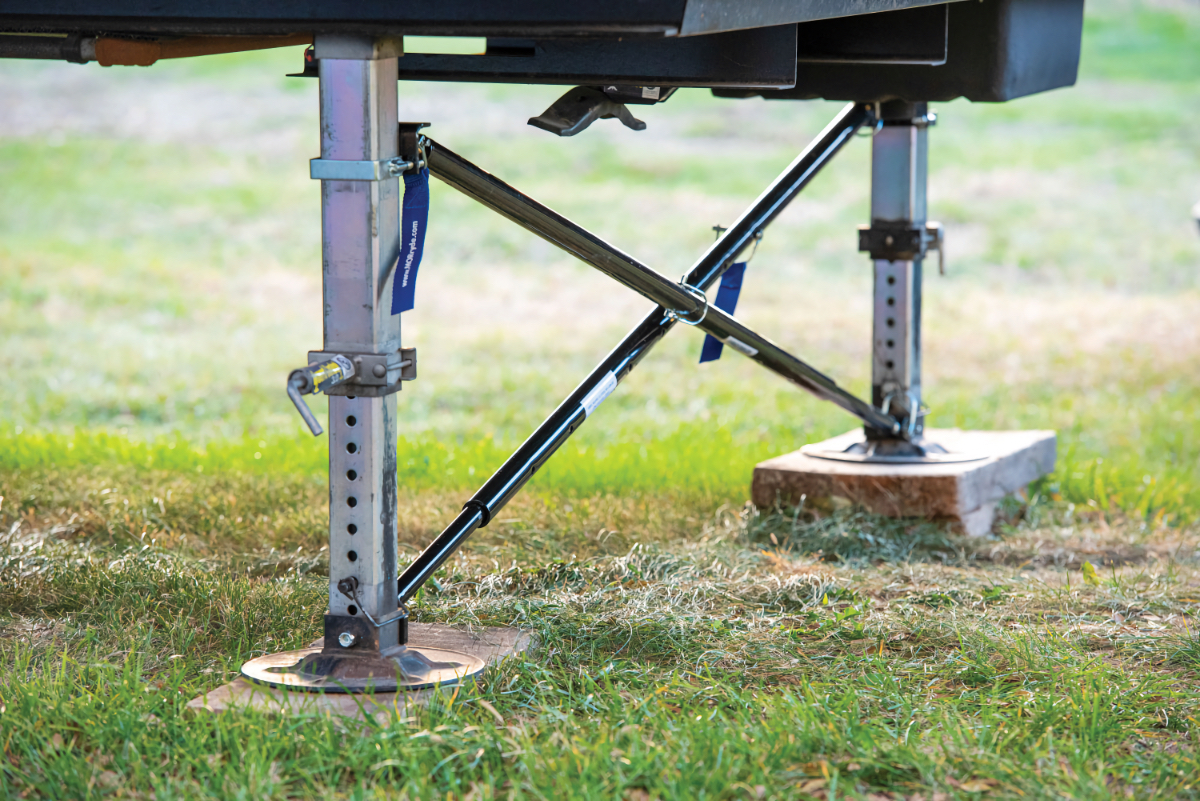
Photo Credit: MORryde
Unwanted Movement
A trailer has several points of contact with the ground once it’s unhitched—the tires, the hitch jack, and the landing gear or jacks that provide additional support when it’s unhooked from the tow vehicle. Movement of those, even in the slightest, contributes to the vertical, horizontal (lateral), and linear motion you feel on the interior. Addressing each of those three directions of movement will help give a rock-solid foundation.
The first step in setting up a stable trailer is making sure it’s sitting level, so the weight is distributed evenly over the supports. While doing this, try to minimize the extension of the landing gear legs or the scissor jacks; the more they are extended, the less stable the trailer. Instead of dropping the leg extensions or raising the jacks all the way up, use wooden 2-by-12s, Andersen Hitch’s levelers, Trailer-Aid wheel chocks, FasTen leveling blocks, or any other combination of camper levelers to get your trailer’s attitude set correctly.
It’s also important to use special pads, such as those made by Camco, along with something to enlarge the footprint on the ground under the feet of the jacks or landing gear legs when setting up camp on softer ground instead of a concrete or asphalt pad. Some campgrounds with extra-smooth asphalt surface sites require some type of pad under the steel stabilizer jack feet. A call ahead will verify this with your planned destination. This helps avoid creating “dents” in the asphalt surface.
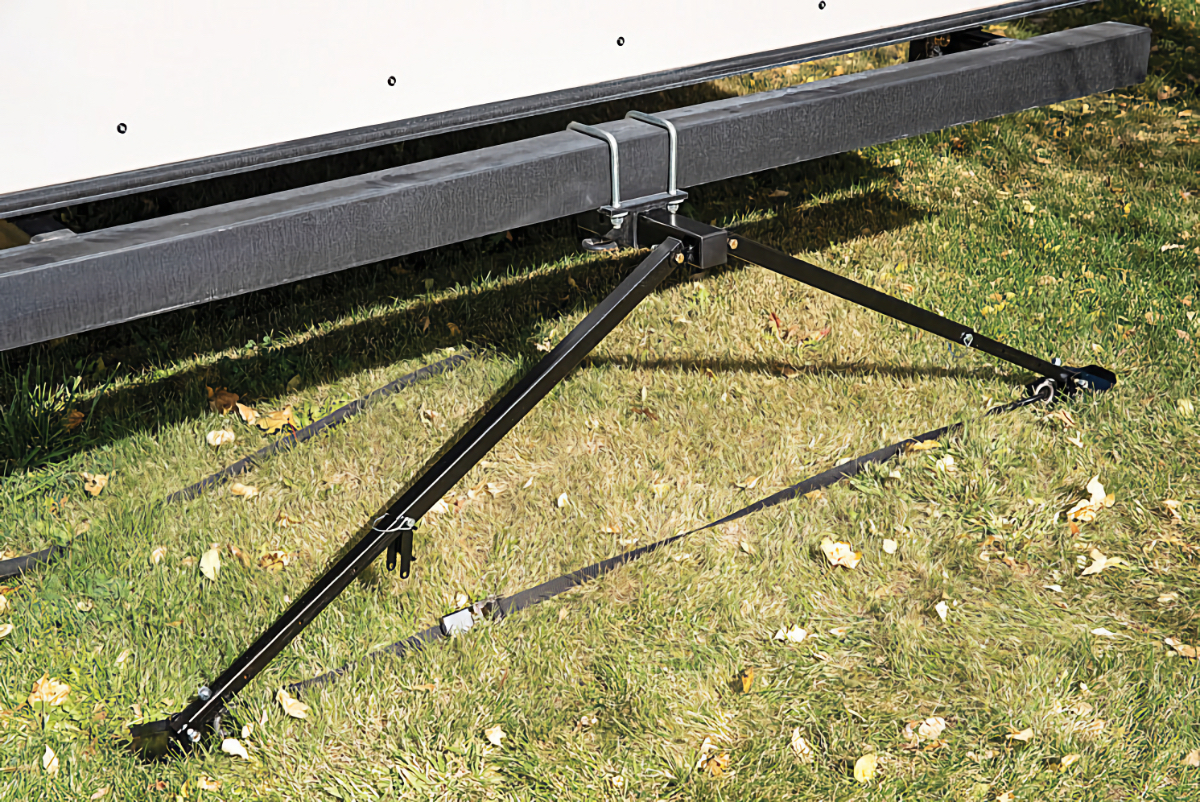
Photo Credit: MORryde
Cross-Bracing Support
To address the horizontal, side-to-side motion, you have to solidify the landing gear, scissor jacks, or other trailer support mechanisms. Even though the scissor jacks and drop-legs may not be fully extended, they are still supporting a lot of weight, and any interior or exterior forces still tend to make them move minutely side-to-side and/or front-to-rear.
This is where installing some form of cross-bracing between the front landing gear, such as the MORryde X-Brace stabilizers for fifth-wheels, significantly solidifies that foundation in much the same manner as the cross-bracing you see used on scaffolding. Lippert and other manufacturers of aftermarket RV products offer multiple stabilizing solutions for trailers. These can be single or cross-brace designs that attach to the top and/or bottom of each support to reduce lateral movements, or in the case of Valterra, a universal stabilizer that bolts to the trailer frame in conjunction with the OEM supports.
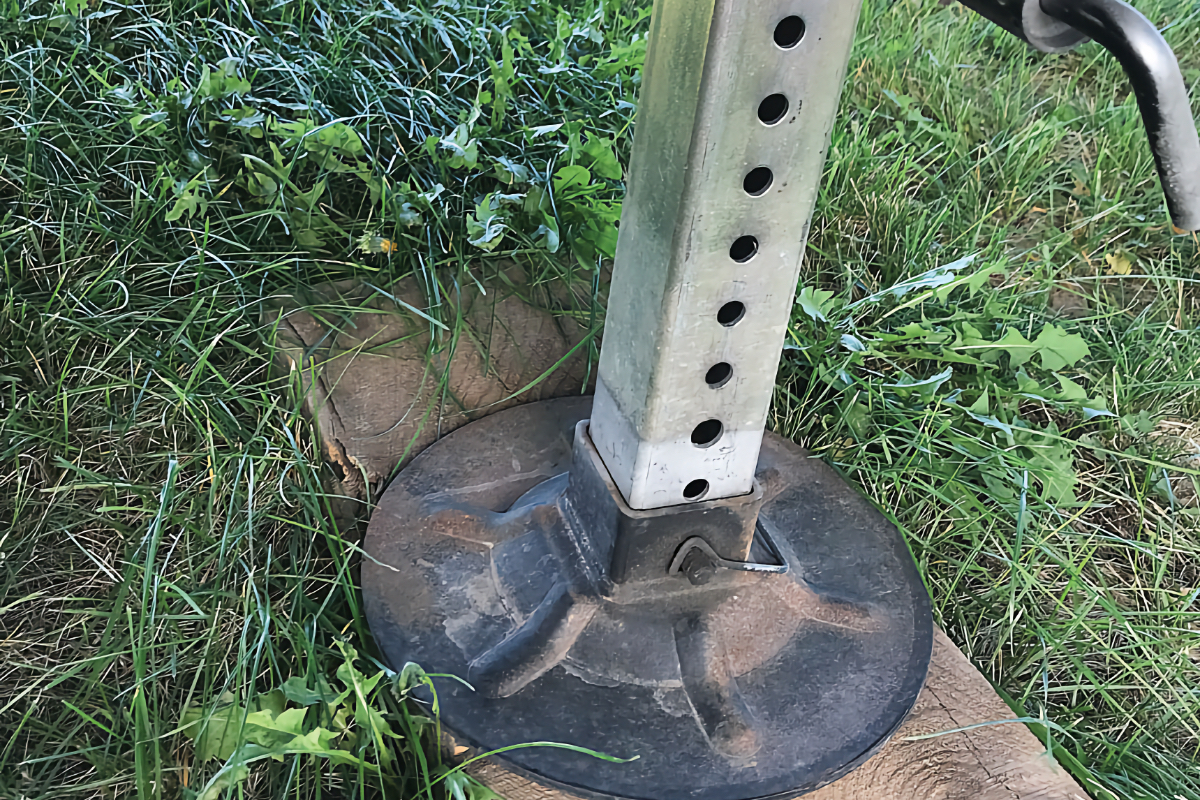
Photo Credit: Bruce W. Smith
Front, Back, and Side-to-Side
There are also a couple of good systems that address both side-to-side and front-to-rear movement of fifth-wheel landing gear and scissor jacks. One is the Steadyfast Trailer Stabilizing System from Hanscom Enterprises. The kit adds a trio of braces that each go from a footplate on the ground to the trailer frame: One brace cut diagonally across the front, one across the rear, and the third angles front to back. These braces are permanently installed and are engaged in less than a minute by tightening or loosening three handles. This setup combats unwanted motion in multiple directions. Similar braces are available for slide-in truck campers to help stabilize them when unloaded from the truck.
The Eliminator II Stabilizer System from Ultra-Fab works in a similar manner, targeting trailers that use scissor jacks. One kit stabilizes movement front-to-back, while the other kit controls side-to-side motion. Both Steadyfast and Ultra-Fab stabilizing systems can be installed and left in place because they automatically move into place when the jacks are lowered.
Another stabilizing upgrade to consider, especially on fifth-wheels and toy haulers that have a lot of overhang behind the rear axle, is to install a third set of support legs close to the rear so the trailer is more evenly supported. Triple landing gear (and the same could be done with scissor jacks on campers) provide an excellent stabilizing footprint in windy conditions.
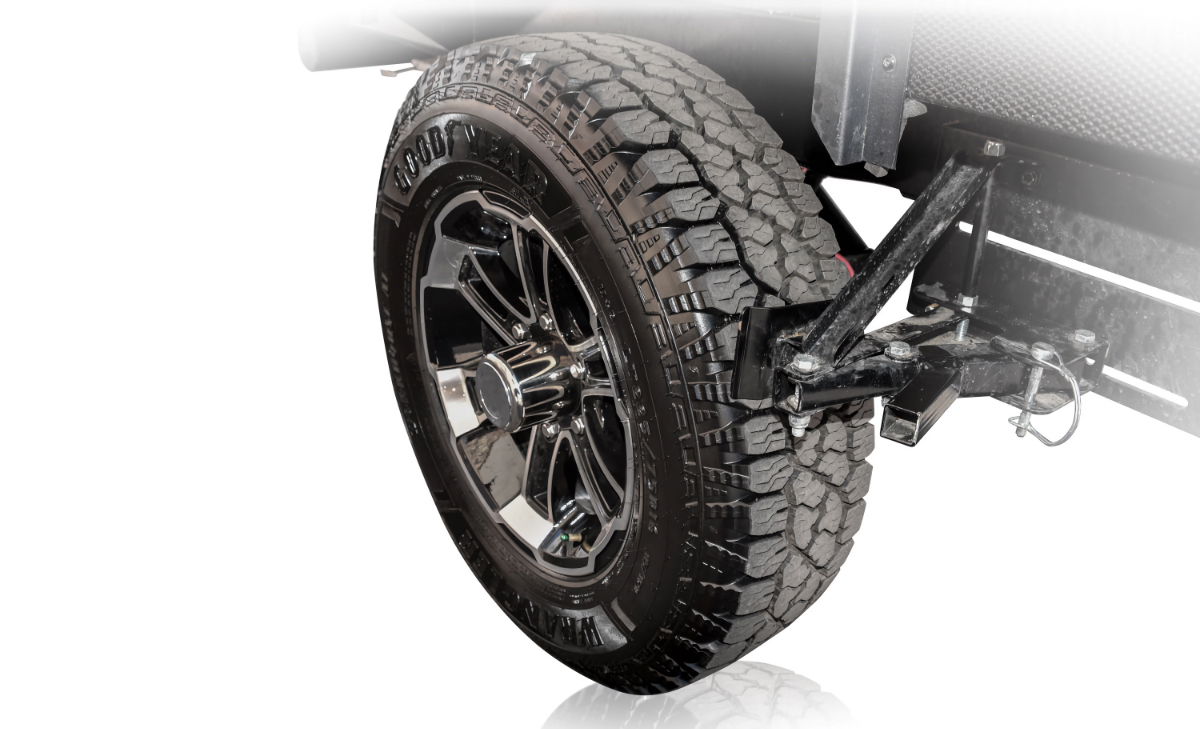
Photo Credit: Ember RV
Stopping Tire Movement
The third step in reducing unwanted motion in a trailer or fifth-wheel is addressing the tires themselves. Any fore/aft movement in the tires, and flex in the suspension, exacerbates the movement you feel inside the trailer and adds to the fore/aft instability in the legs and jacks. To combat tire movement, it’s critical they be blocked to prevent any rolling movement.
Tire chocks, blocks, and similar devices are available at every RV outlet. A good tire chocking system is one that braces between the tires, such as the X-Chock Tire Locking Chock and Ultra Super Grip Chock available through many RV outlets, including Camping World. These devices fit between the trailer tires and crank open like a scissor jack turned sideways to prevent the tires from moving.
Preventing any fore/aft movement in the tires is another step toward entering an RV that feels rock-solid even in the worst weather conditions.
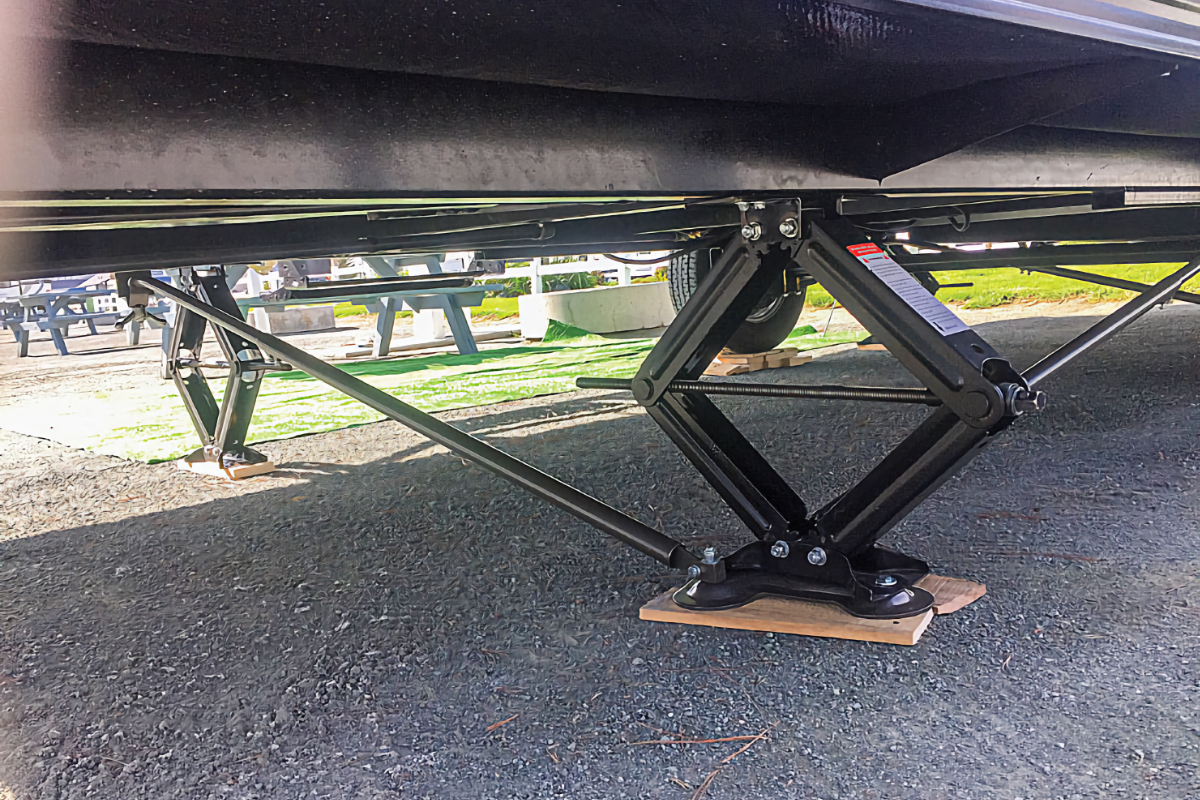
Photo Credit: Hanscom Enterprises
Other Stabilizing Solutions
On trailers that have a 2-inch receiver hitch out back, the tripod-like hitch-mounted stabilizer from MORryde provides additional stability both front-to-rear and side-to-side. It’s a good companion accessory to the scissor jack and landing gear cross-brace stabilizing systems.
What about fifth-wheel kingpin stabilizers? They help. But the point of contact with the trailer is a single pivot point centered at the very tip of the trailer, which isn’t ideal for preventing side-to-side and fore-and-aft movement in gusty winds. Some of these products have two legs, and some have three, which provides a solid triangulated support point for the hitch pin. Talk to other campers using this kind of product to learn about their real-world experiences, and you may be surprised—it may be right for you.
The key to all these trailer stabilization products is to find the one(s) that work best for your situation and that are easy to install and use. If the areas in which you generally camp are not prone to gusty winds, or a little movement inside the trailer isn’t bothersome to your overall comfort, then maybe employing just one of the above solutions is all that’s needed to ramp up the comfort level. On the other hand, if you love camping along the shore, in the desert, high in the mountains, or somewhere else where wind can be a frequent issue, then applying multiple trailer stabilization techniques is in order.
Stabilizing your trailer or fifth-wheel so it doesn’t wiggle, bounce, or rock with every wind gust or step of some heavy-footed occupants requires a little manual labor and mental acuity. Once you know where the movement issues originate, it’s easy to find a solution to stopping them by applying a few aftermarket upgrades.
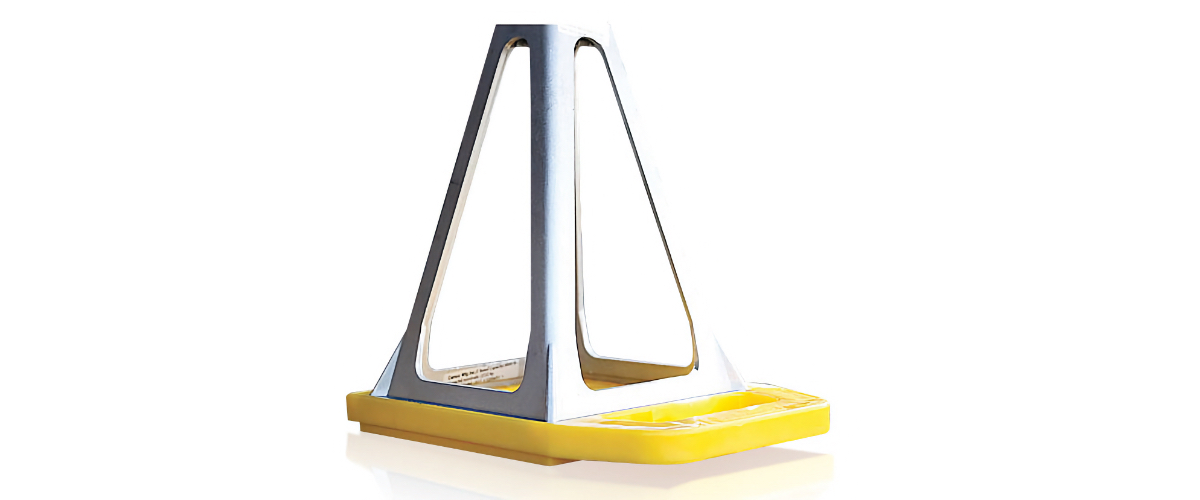
Photo Credit: Cameo
Jack Pads
Putting quality pads under your RV’s jacks helps prevent jacks and stabilizers from sinking into the ground. These pads from Camco are made with heavy-duty polypropylene and come in a four-pack that interlocks for easy storage. For use with non-hydraulic jacks and stabilizers and even awning arms.



